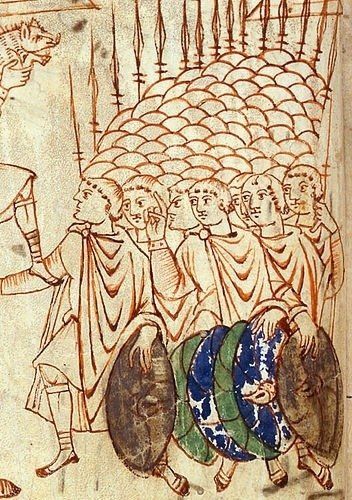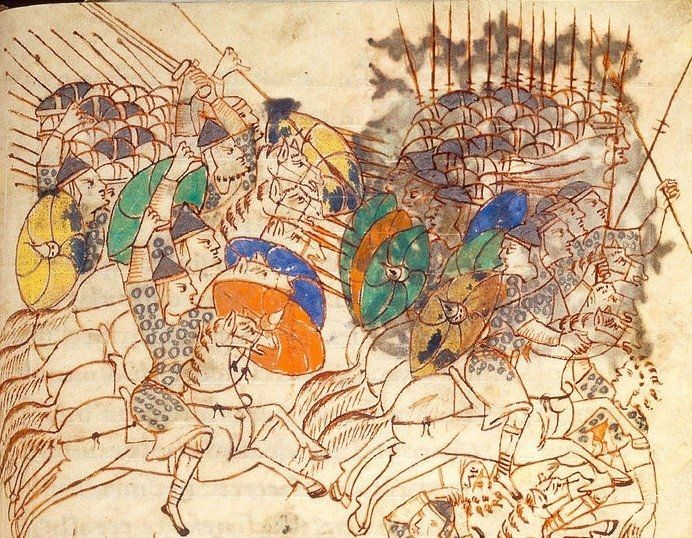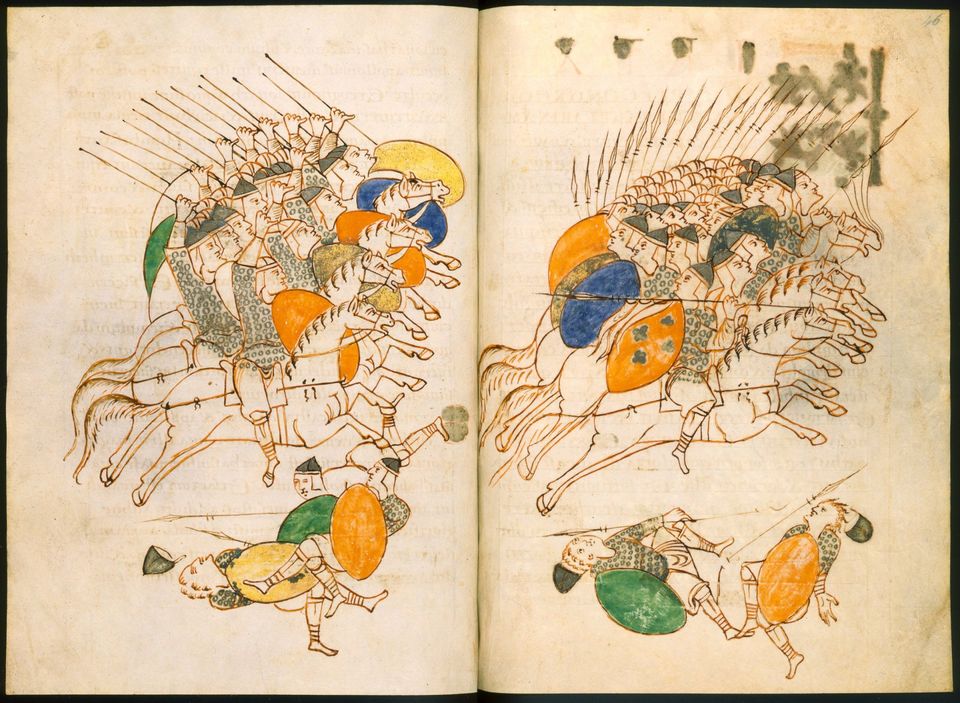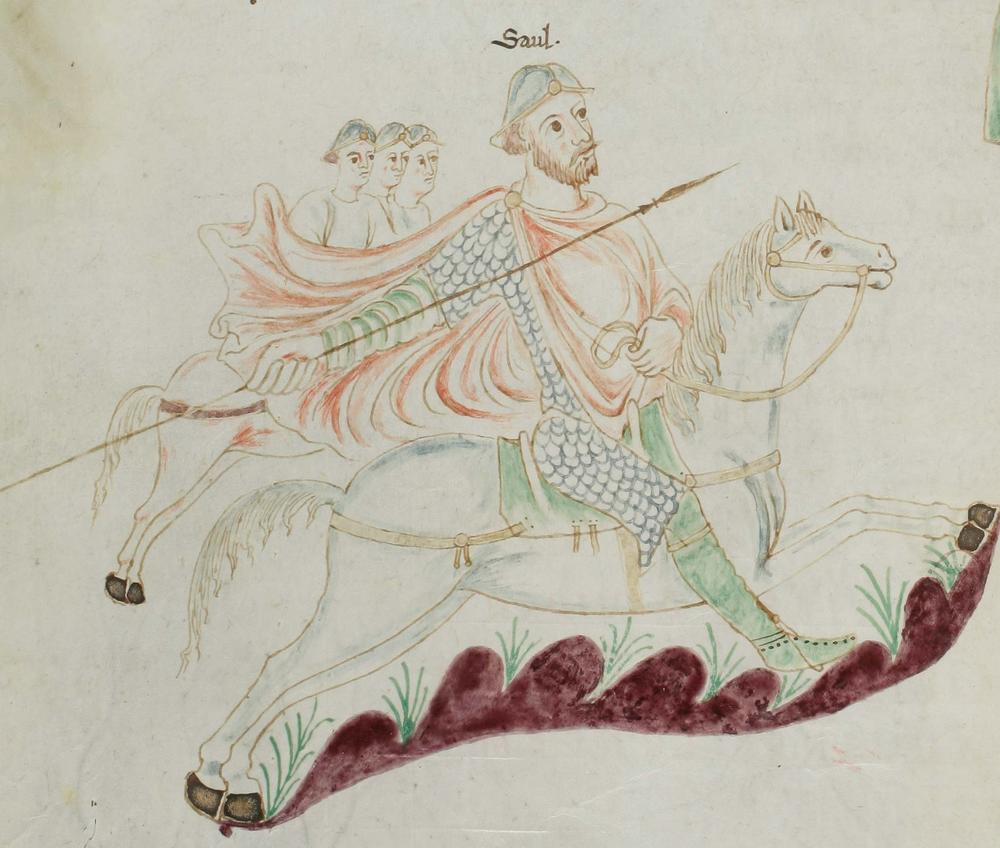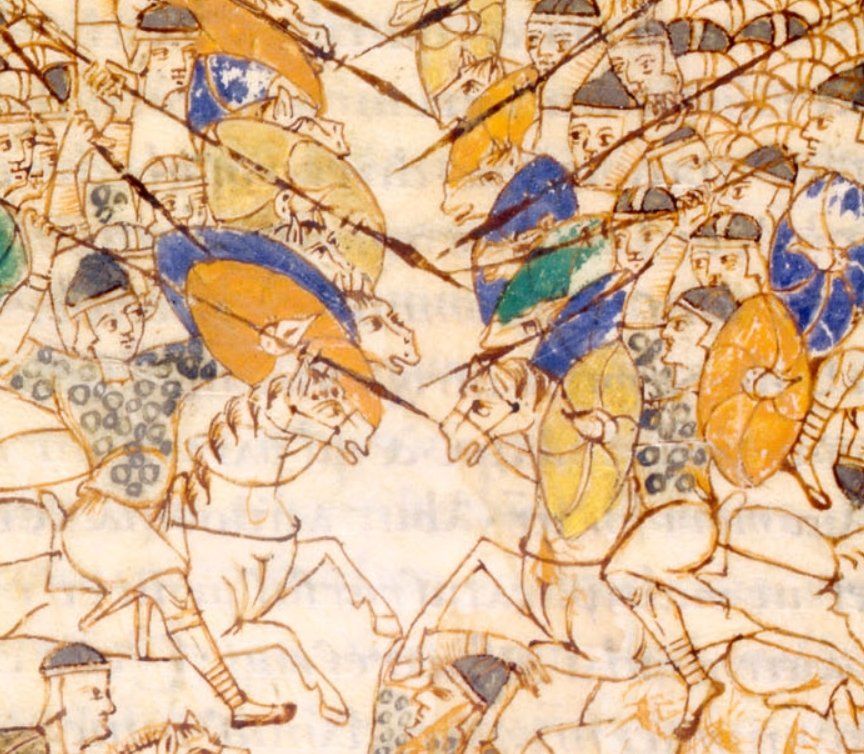The book of the maccabees, a witness of the war in the tenth century. (Codex_PER_F17)
websitebuilder • 11 août 2019
Origin and history of conservation
This Codex, now in the Leiden Library in the Netherlands, is dated to the first half of the 10th century. It is therefore straddling between the extreme end of the Carolingian era, and the beginning of the Ottonian era. The construction of this work probably began at the Abbey of St. Gall, but seems to have been finalized at Reichenau Abbey in Germany. The manuscript contains the first book of "Maccabees" and the copy of the fourth book of "Epitoma Rei Militaris" of Vegetius. They were both assembled at the very end of the 12th century. Unfortunately, there is no digitization of the document in its entirety, and we will only be able to study scattered folios available on the Internet.
Description of the content
This Codex is famous for its formidable representations of bellicose scenes. The figurative events are biblical, but it seems that the, or the draftsmen, were inspired by Magyares incursions that ravaged southern Germany in the tenth century. Once again, and as is customary in Carolingian religious literature, contemporary material elements of the writing of the document are set on a narrative narrative relating older events. The stylistics of the drawing is particular, since it plays on the effects of compact accumulations of characters, preventing in fact any quantitative analysis where the basic unit is the individual. However, it is possible to identify with relative ease the represented militaria and to make cross-checks with available textual and archaeological data. The drawing of a rare delicacy offers valuable information on late Carolingian military equipment, and that of the Magyars, both mixed in scenes where soldiers are regularly arranged in combat formation.
Analysis of military equipment
Most warriors wear heavy chainmail, which is not usual in Carolingian iconography where scaled armor predominates. Perhaps it is due to the late nature of this document. Note, however, that some characters are protected from scalar armor already frequently encountered in the Stuttgart Psalter, written a hundred years earlier.
The question of helmets, is quite difficult: About half of the helmets represented is similar in all respects to the helmets usually represented in Carolingian illuminations. They are reinforced with two crosspieces on the summit part, as well as another on the whole circumference: it is thus of "spangenhelms" all that is more classic. But the other half of the helmets has a tapered shape on the top and look in all respects to the helmet Pecs (Hungarian people, current Hungary, tenth century). It is possible to observe on the neck of the soldiers what could be a cover of chainmail or thick fabric, that Carolingians named "hasberga". Let us note that it is more prudent to abandon any hope of discovering in the Carolingian iconography any copy of a nasal helmet: Some reenactors rely on one or two helmets that have fallen to the ground, and believe that they see a nasal that is probably only a schematic representation of the chin strap, or the cover from the back of the helmet that fell to the ground.
The shape of shields and umbos is quite classic. Note however the regular presence of oval-shaped shields without umbos, possibly of exogenous origin? For the rest, spears, javelins and swords are clearly visible, but the drawing does not allow to identify the typology accurately. We can also distinguish another element of more specific militaria, regularly represented in Carolingian iconography: the arc (composite, and of exogenous origin) with double curvature.
Battle tactics
Precious representations of phalanxes in compact formation can be seen in the Book of Maccabees. These men of humble condition are rarely represented in detail and deserve our full attention since they represented the backbone of the Carolingian and Ottonian army. These phalanges consist of soldiers grouped in tight formation, armed with a spear of medium length and protected from a shield. We will devote a whole article later to the operation of these phalanges, so much is it complex.
At the option of the folios, riders ride in formation towards the opponent, ready to inflict violent blows with the help of the central umbo or the slice of the shield. The fugitives, also on horseback, wear their shields in the back with a strap to better protect themselves from projectiles. These scenes, of great wealth are witnesses of a tactic particularly appreciated by the Carolingian cavalry: the feigned retreat. Nithard, Charlemag's grandson , Count of Ponthieu and often struggling with the Scandinavians, went so far as to describe with precision this stratagem in his chronicles "Historia".
This tactic is to charge the opponent, then, a few seconds before the shock, to simulate a retreat. The enemy, sure of his victory, may then start a disorganized pursuit. The attackers, on the run, of course, but still in formation, turn around and can surprise their pursuers whose ranks have been broken.
In this tactic, training cohesion matters more than the load speed itself. The disaster of the Battle of Mount Süntal is the perfect illustration: the heavy free riders have loaded the Saxon forces at full speed without remaining in compact rows and suffered a terrible military failure, forgotten (voluntarily?) Carolingian literature , with the exception of the Annales regni Francorum of the year 782.
Conclusion
The Book of "Maccabees" is a source of great importance. Indeed, this Codex presents a military material, worn in real conditions (ie on a battlefield) as is rarely the case in Carolingian iconography. Therefore, it is possible to imagine more easily the use of the weapons and armor represented and the tactics employed on foot as on horseback. Finally, the drawing seems devoid of ancient influences, which frees us from the traditional questions relating to the origin of the represented militaria.
Bibliography:
Bachrach B. (2001) Early Carolingian Warfare
Coupland S. (1990) "Carolingian Arms and Armor in the Ninth Century"
Halphen L. "Eghinhard, life of Charlemagne"
See also: Walther's Gesture.
Author: Damien Schirrer.
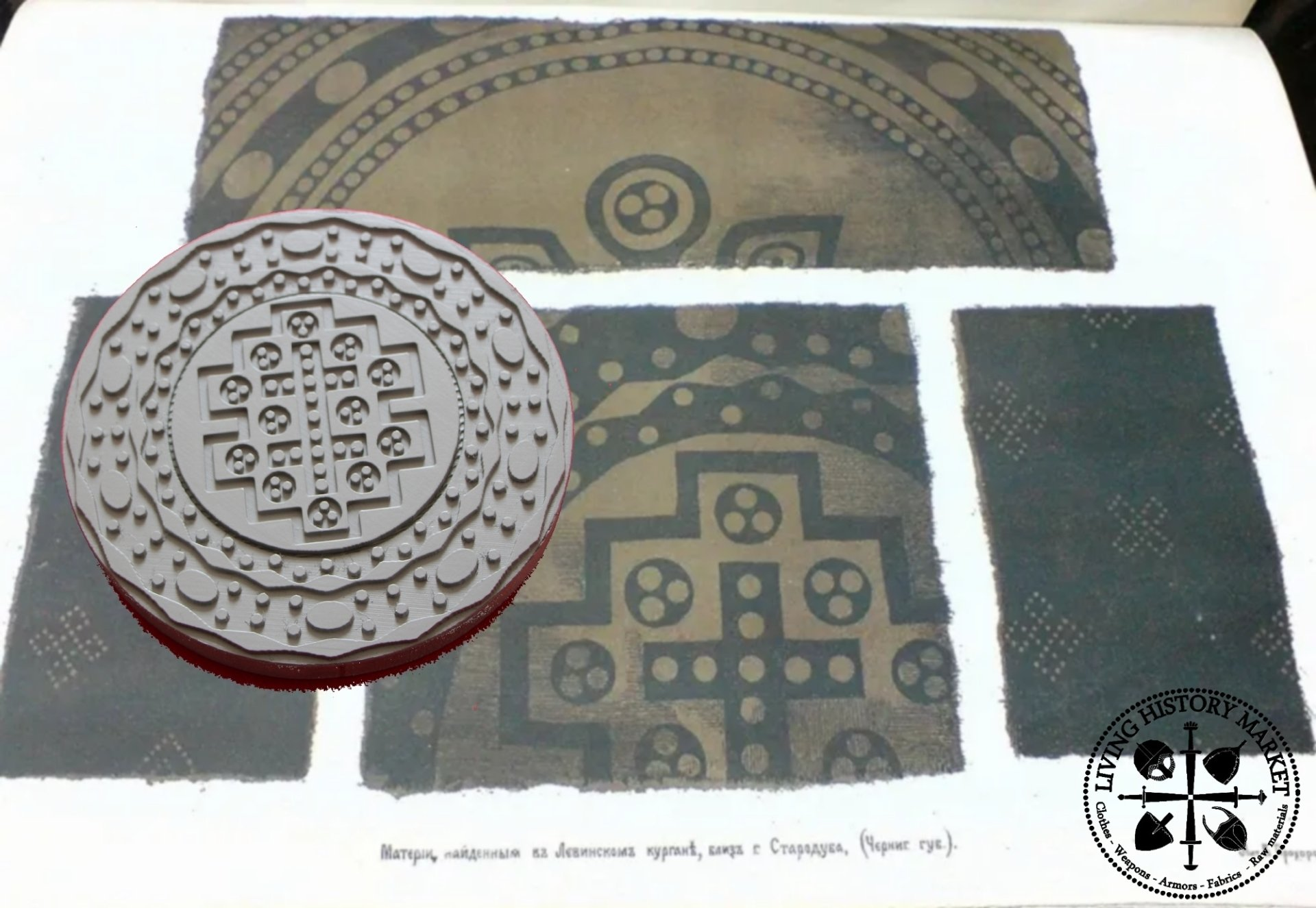
Les motifs tamponnés de Chernigov, qui sont au nombre de 2, sont connus de la grande majorité des reconstituteurs du début du moyen-âge à l'heure actuelle. La version « en croix » à décor crénelé, et l'autre, en « fleur » décorent désormais les vêtements de reconstituteurs de plus en plus nombreux, Rus, ou Byzantins pour la majorité. Les motifs tamponnés aujourd'hui, qui sont invariablement les mêmes, sont issus des travaux de E.S. Vidinova, datés des années 40. Cette interprétation quasi « unanime » à l'heure actuelle s'est faite sur la base d'artefacts fragmentaires, quoi que suffisants pour recréer un médaillon complet, par jeux de symétrie répétées.
